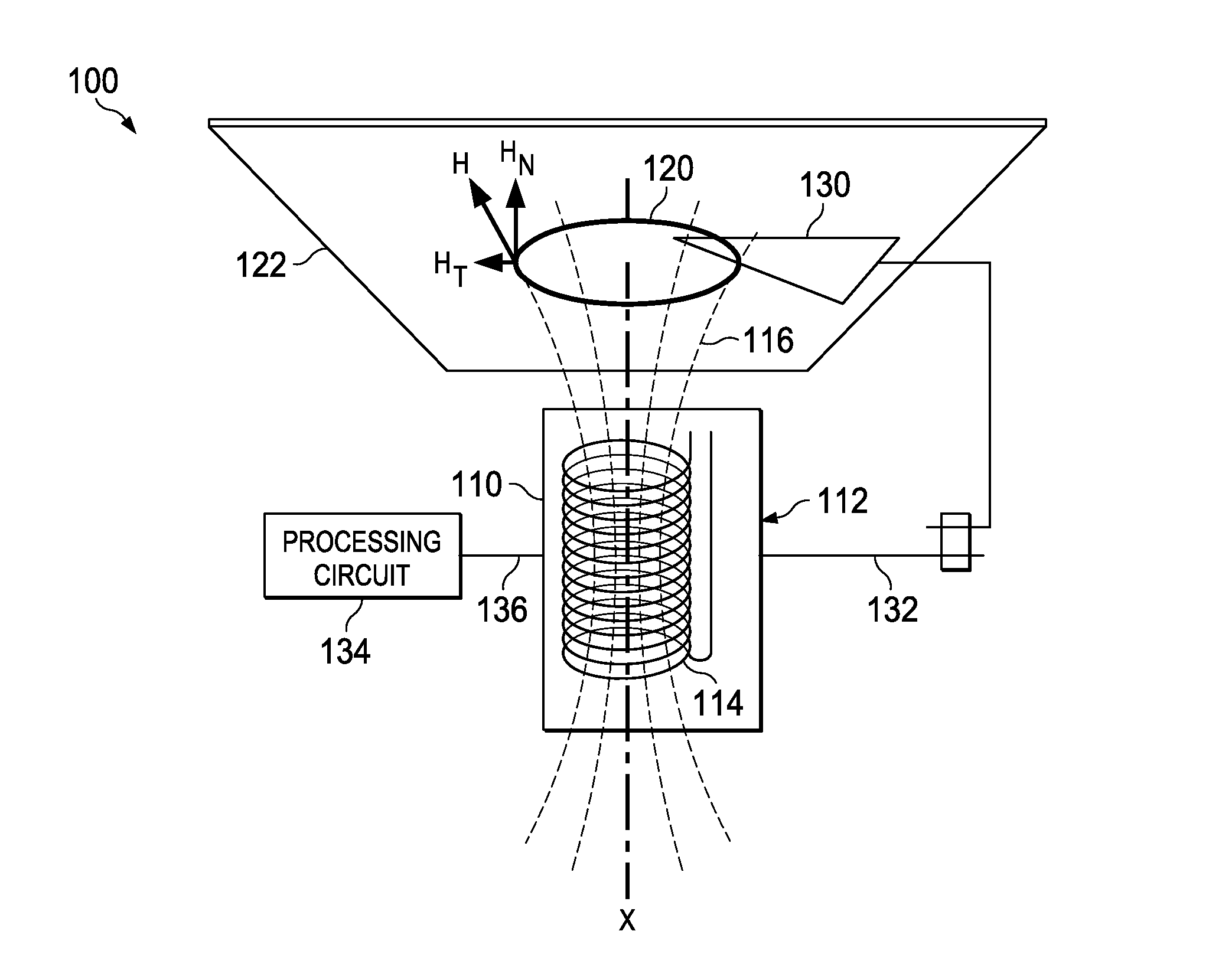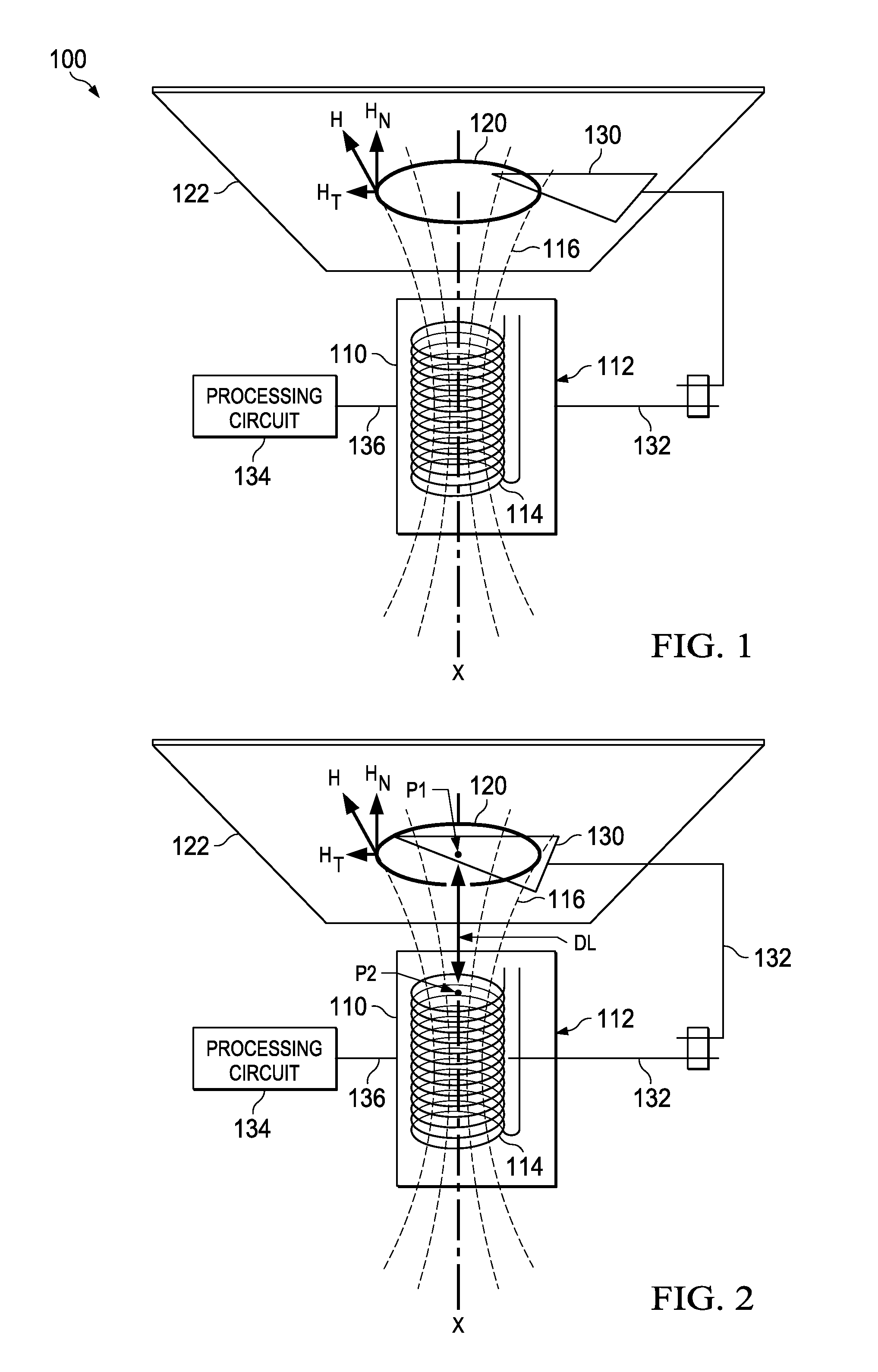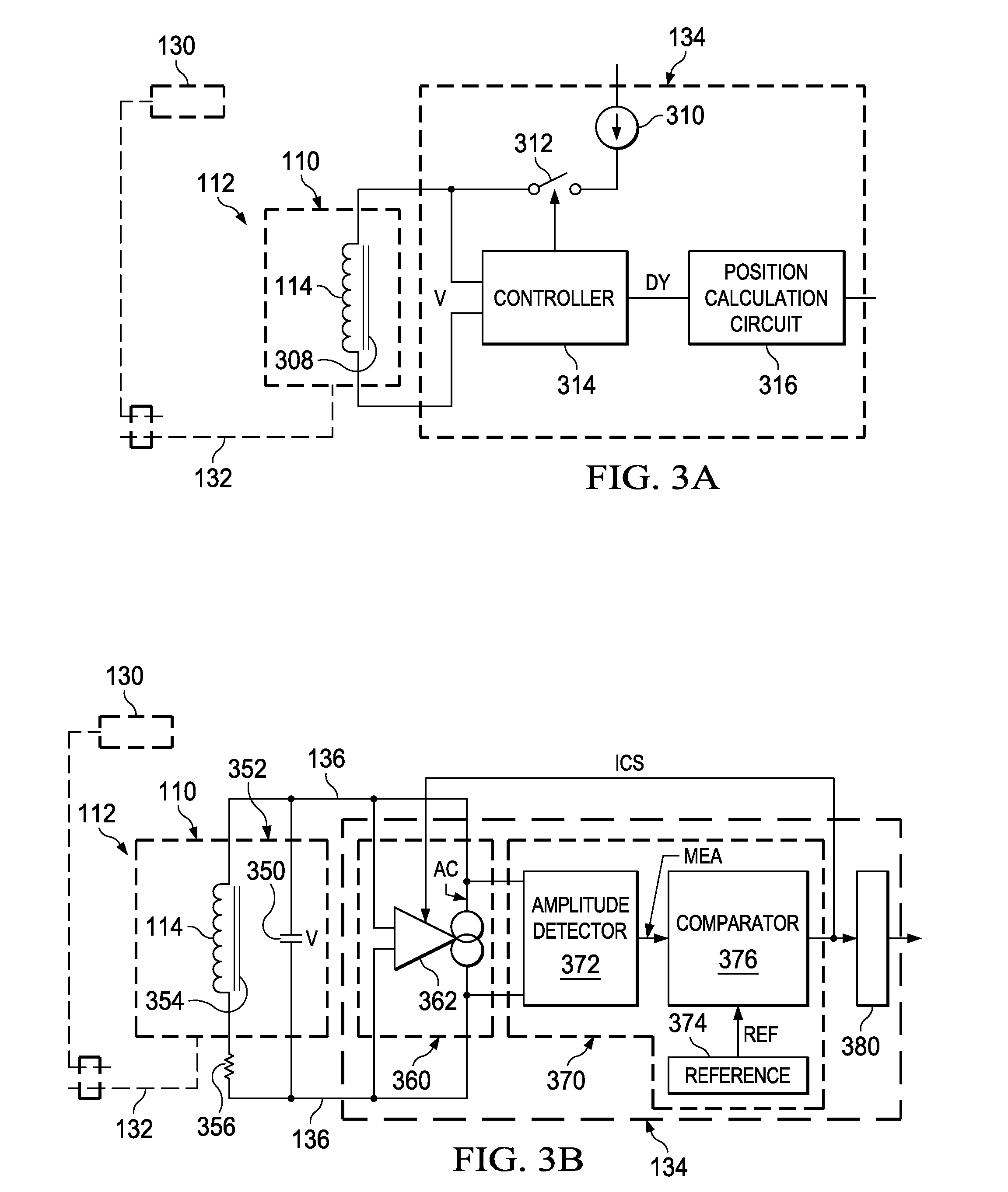Inductive sensing including inductance multiplication with series connected coils
- Summary
- Abstract
- Description
- Claims
- Application Information
AI Technical Summary
Benefits of technology
Problems solved by technology
Method used
Image
Examples
Embodiment Construction
[0038]This Description and the Drawings constitute a Disclosure of example embodiments and applications that illustrate various features and advantages of inductive sensing including inductance multiplication with series connected sensor coils.
[0039]A position detecting system of the present invention includes one or more coils, electronics that are connected to the coils, and one or more electrically conductive targets that are partially exposed to the magnetic fluxes of the one or more coils. The electronics sense the characteristics of the coils, such as the coil quality or Q factor at the excitation frequency or the inductances of the coils. Both are a function of the total amount of magnetic flux that a target receives from a coil.
[0040]The position of the one or more targets is determined within a plane that lies perpendicular to the longitudinal axes of the one or more coils at a substantially constant longitudinal distance from the one or more coils. The longitudinal axis of...
PUM
 Login to View More
Login to View More Abstract
Description
Claims
Application Information
 Login to View More
Login to View More - R&D
- Intellectual Property
- Life Sciences
- Materials
- Tech Scout
- Unparalleled Data Quality
- Higher Quality Content
- 60% Fewer Hallucinations
Browse by: Latest US Patents, China's latest patents, Technical Efficacy Thesaurus, Application Domain, Technology Topic, Popular Technical Reports.
© 2025 PatSnap. All rights reserved.Legal|Privacy policy|Modern Slavery Act Transparency Statement|Sitemap|About US| Contact US: help@patsnap.com



